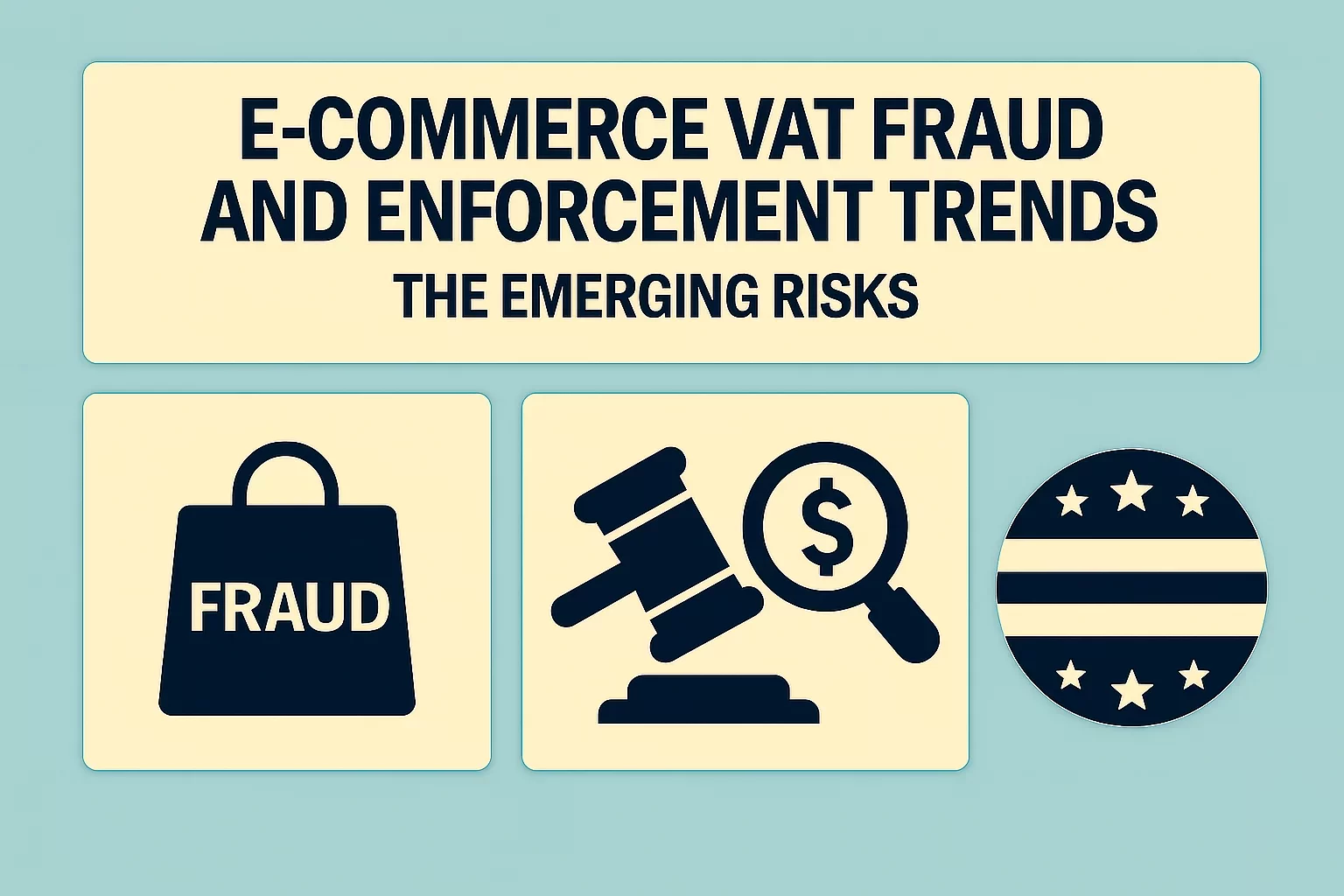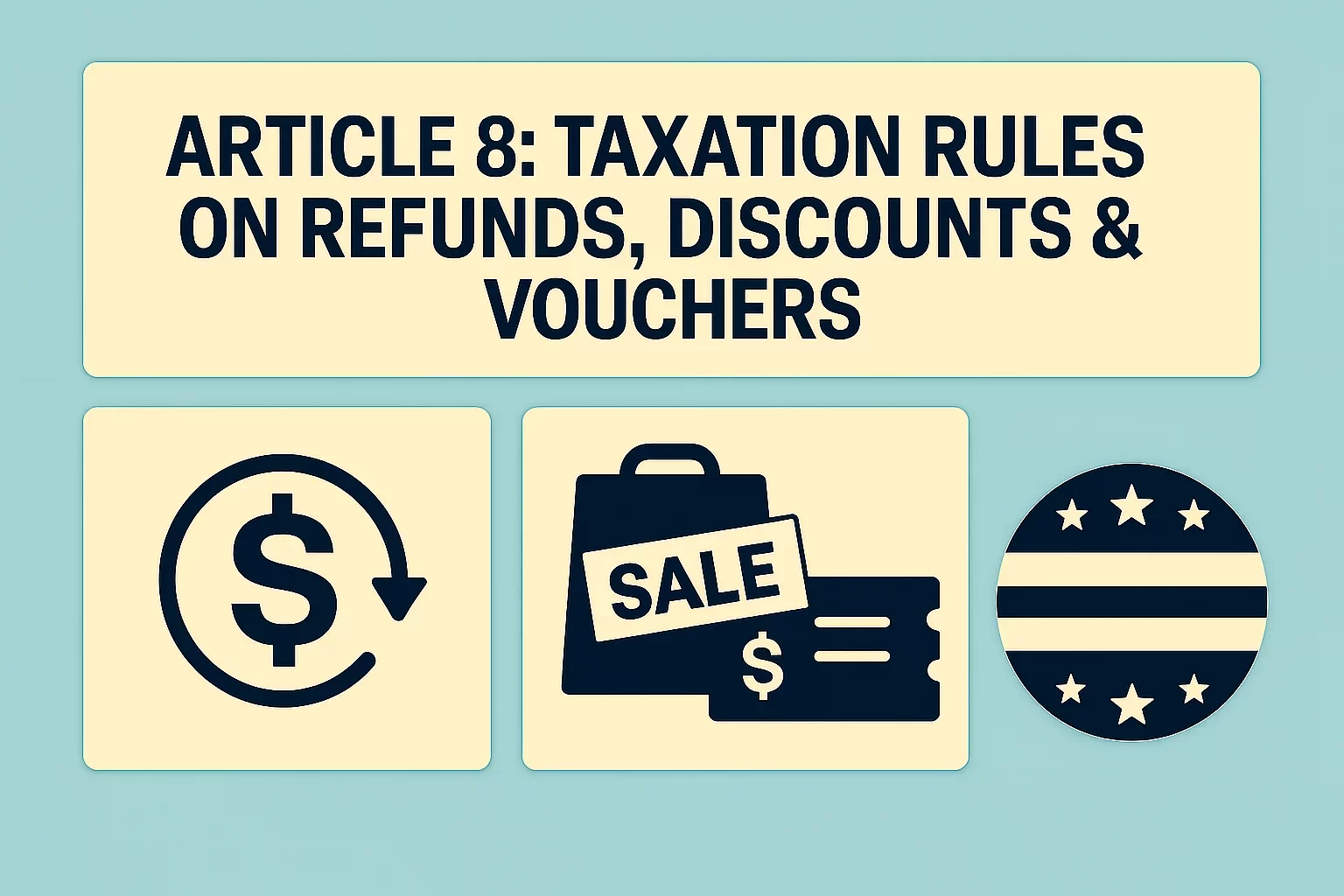Taxation Rules on Refunds, Discounts, and Vouchers
Get clarity on the VAT implications of offering refunds, discounts, and vouchers in the e-commerce industry and how to handle these transactions.
Selling goods, transporting them, and moving them between manufacturers, sellers, and consumers are all an integral part of the retail supply chain and e-commerce. However, sellers also employ other commercial strategies to enhance sales, such as discounts and vouchers.
Additionally, they may need to issue refunds to dissatisfied consumers for damaged or defective goods or products that were delivered incorrectly. Moreover, some e-commerce sellers even guarantee refunds for specific periods under “no questions asked” refund programs. Therefore, if consumers simply do not like the products, they can return them and request a refund.
However, while these mechanisms serve commercial goals, such as helping businesses drive sales, retain customers, and respond to market conditions, their tax treatment is often a challenge for sellers, especially those operating in multiple jurisdictions.
Refunds: When and How VAT is Adjusted
Refunds typically occur when goods are returned, services are canceled, or price adjustments are made after a sale has been completed. In cases when goods are returned for a full or partial refund, sellers must adjust the VAT on the transaction by replacing invoices or issuing a credit. Consequently, the seller may be liable for reclaiming the VAT that has been collected and remitted.
However, e-commerce businesses that sell goods internationally may also have to deal with import VAT and customs rules and duties when the goods are returned from a non-EU country. For EU businesses, the VAT treatment depends on whether the seller uses the One-Stop-Shop (OSS) or the Import One-Stop-Shop (IOSS) scheme.
For example, if the sellers are registered for the IOSS, they are exempt from import VAT, as the consumer has previously paid the seller's VAT due on the supply of goods at the VAT rate applicable in the consumer's country. However, if the IOSS is not utilized, goods may be imported into the EU in the name of the seller. In that case, the seller must pay import VAT. Nevertheless, this VAT is recoverable, with the process depending on the VAT rules of the EU country where the VAT was due.
Nonetheless, businesses that make refunds are entitled to reduce the VAT they initially accounted for. To practice their rights, they must adjust VAT. Such adjustments are contingent upon the proper issuance of a credit note or a similar corrective document. The documents required and the timeframe for claiming these VAT adjustments depend on national rules, which creates an additional challenge for e-commerce sellers.
Discounts: Types and VAT Implications
Discounts are one of the most popular mechanisms to boost sales, and they can take many forms, such as early payment incentives, trade discounts, volume discounts, or promotional reductions. The VAT implications depend on when and how the discount is granted. Generally, if a discount is applied at the time of sale and reflected on the invoice, the taxable amount is simply reduced, and VAT is calculated accordingly.
However, since there are different types of discounts, VAT rules may vary. The UK government explained several key kinds of discounts and how and when to apply VAT. For basic discounts, VAT is charged on the discounted price, in accordance with the general rule.
For a multi-buy offer in which consumers receive a discount for purchasing multiple products, the key to applying VAT is determining whether all the products are subject to the same VAT rate. If all products are subject to the same VAT rate, typically the standard VAT rate, the VAT is charged on the combined price of the products. In situations where different VAT rates are applicable, the so-called “appropriation” method must be used.
The appropriation method is also used for link-save offers. These offers, typically known as “buy one, get one free” offers, refer to a situation where consumers receive a discounted or free second product with their purchase. However, if the resale value of the free or discounted products is less than GBP 1, the sale value is less than GBP 5, costs less than 20% of the total of the other products, and at a separate price from the main product, VAT is charged on the combined value of products.
If e-commerce businesses, as part of their business strategies, offer free goods, such as free samples, for marketing purposes, provided in a quantity that allows potential customers to test the product, no VAT is charged.
Vouchers: Single-Purpose vs Multi-Purpose
Gift certificates or cards sold to consumers that may be later redeemed for products or services typically fall under the category of single-purpose vouchers (SPVs) or multi-purpose vouchers (MPVs). Understanding the distinction between these vouchers is vital for determining at which point VAT is charged and at what rate.
The main characteristics of the SPVs are that the place of supply and applicable VAT rate are known at the time the voucher is issued. Consequently, VAT is due at the time of issue, not at redemption. For example, a SPV is a voucher for a specific bicycle accessory or a voucher to visit a particular cinema.
In contrast, an MPVs allows redemption of various goods or services subject to different VAT rates or in other jurisdictions. Therefore, the VAT is due only at the time of redemption. An example of MPVs is vouchers for a supermarket chain worth EUR 100. Considering that supermarkets have a wide range of products, taxed at different rates, only at the time of redemption can the VAT be determined.
Additionally, retailers and platforms must also distinguish between acting as principals or agents, as acting on behalf of the issuer alters the VAT treatment.
Compliance, Record-Keeping, and Audit Red Flags
Given the technical nature of VAT adjustments for refunds, discounts, and vouchers, compliance and record-keeping are crucial in avoiding unnecessary complications with tax authorities. VAT refund claims are under special supervision, as transactions where taxable amounts are reduced after the original VAT declaration are typically red flags indicating potential underreporting or fraud.
Inaccurate issuance of credit notes, delayed VAT adjustments, or inconsistent documentation between transaction parties may alert Tax Authorities, who then conduct tax audits and inspections. Therefore, e-commerce businesses, especially those involved in cross-border transactions, must ensure that invoices, credit notes, customer communications, and accounting entries are aligned.
Refunds and adjustments must be declared in the correct period, jurisdiction, and manner, even if the corrections and adjustments occur months after the original sale. Additionally, businesses offering discounts and vouchers must correctly categorize them to avoid applying incorrect VAT rules. Regarding the SPVs and MPVs, e-commerce sellers should maintain detailed documentation on the nature of the voucher, including transfer data and redemption information.
Conclusion
Considering the growth of the e-commerce sector and the marketing and practical implications that refunds, discounts, and vouchers have in day-to-day business operations, their tax treatments are often underestimated. Although the EU VAT framework provides harmonized rules, applying those rules requires attention to detail and also knowledge of specific national rules.
In contrast, as is usual for US sales and use tax rules and regulations, each state defines its applicable rules. Consequently, the US sales and tax rules for refunds, discounts, and vouchers vary from one state to another. Therefore, e-commerce sellers should determine which US states they are subject to sales and use taxes, as well as which rules apply to refunds, discounts, and vouchers.
The appropriation method in the UK is used when a discount applies to multiple products with different VAT rates, such as in multi-buy or link-save offers. VAT is allocated proportionally based on the price and VAT rate of each product, ensuring the correct amount of VAT is charged for each item in the bundle.
Taxable persons, such as businesses and individuals, can reclaim the VAT initially accounted for, provided they issue a credit note and meet the legal and documentary requirements set by the relevant tax authority.
A Single-Purpose Voucher (SPV) has a known place of supply and VAT rate, so VAT is due at the time of issue. A Multi-Purpose Voucher (MPV) is redeemable for different goods, and VAT is due only at the time of redemption. At the time the MPV is used, the applicable VAT rates are also determined.
Typically, VAT is not charged on free samples provided for marketing purposes if they are of low value and intended for testing purposes. However, if free gifts are given outside of qualifying conditions, VAT may be due based on the value of the item.
Although the EU VAT Directive provides harmonized rules on vouchers, the implementation may differ in terms of documentation, reporting requirements, and treatment of unused vouchers. An additional consideration for taxable persons who offer and sell vouchers is to monitor any European Court of Justice rulings on this topic, as they have a significant impact on the applicable rules.
Source: EU VAT Directive, Estonian Tax and Customs Board, UK Government, PwC, California Department of Tax and Fee Administration, VATabout- ECJ Rules Against Germany on VAT Refund Practices – Case C-371/19, VATabout - Discounts, Deductions, and Dilemmas: ECJ Clarifies VAT Adjustment Rules


